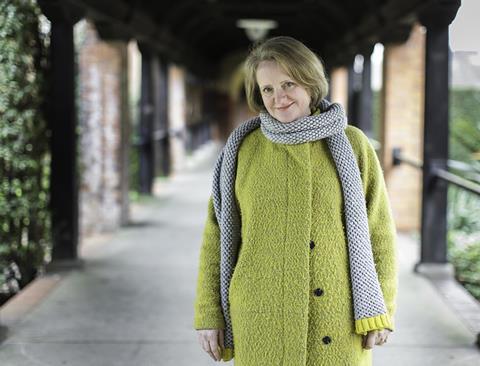Much work needs to be done in joining up the agendas of food, homes and health – but interesting things are happening, writes Flora Samuel

Paul, a vegetable farmer who provides me with a weekly box of beautiful organic produce, has had to stop deliveries as, for the first time in history, his fields in Abergavenny have completely flooded and all his brassicas have gone.
While ailing brassicas are a typically British source of mirth, for me this offers a chilling taste of things to come when, with the onset of flooding, the Netherlands will no longer want to export food as they will need everything for their home market. We in Britain will have to swiftly bring our focus back to food production as we did in the war.
Architect Carolyn Steel’s recent book Sitopia makes an interesting read on all this. Communities across Britain are establishing community farms and local food production supply chains with little help from government which has until recently focused on Big Agra and its cousin Big Pharma. There are some hopeful signs in the 2020 Agriculture Act that things are changing towards smaller, more local production.

Changes in food will change the way the land is used. The land is the number one issue in addressing our “housing crisis” which really began way back when, with the land enclosures and the divvying-up of the commons for private interest. Without a commons – for food production, leisure and innovation – our ability to be resilient in the face of extreme global events is very limited. As George Monbiot, Martin Adams and others argue, the only way out of this is by taxing the exclusive use of land. Yes it might cause a (Robin Hood-inspired) wobble in the real estate market, but wouldn’t that be worth it to make the UK more equitable?
The recent publication of the government’s Geospatial Strategy reveals how much work needs to be done in joining up the agendas and data of food, homes and health. I can’t see this happening without major re-investment in the planning system and allowing it to become much more entrepreneurial. Imagine what would happen if the government was allowed to buy up land in the Oxford-Cambridge corridor, earmarked as the nexus of future development in England, and to benefit as landlord from the value uplift that is likely to result from its own investment? It just doesn’t make sense that the government invests in places and then developers cash in on its investment. Yet this is just another example of a phenomenon described in Mariana Mazzucato’s The Value of Everything where the private sector cashes in on innovations paid for by the public.
How can children care for nature when they have so little experience of its power?
The Good Economy consultancy is examining the way banks and funders can be encouraged to make sustainable investments. What I predict, going forward, is a joining up of the environmental and social risk (ESR) management, as used by banks and others, with the social value agenda since there is increasing recognition that socially unstable places are risky places for investment. You might want to respond to the social value consultation on the London Sustainable Development Commission website which floats the possibility of a very exciting range of initiatives in this zone as it develops its recovery plans. The people behind this were also instrumental in conceiving London as a National Park City. Trees, notably native trees, have a critical role in reducing the risk of flooding, improving air quality and in generating social value of many sorts. I am particularly fond of an initiative in Melbourne, Australia, now taking off in other places, where trees have email addresses, receiving regular love letters from their fans.
Trees of course should also be the home of children many of whom, as Jay Griffiths describes in her necessary book Kith: The riddle of the childscape, have become almost entirely disenfranchised from the land. How can they care for nature when they have so little experience of its power?
The privatisation of land and a squeeze on public space and amenities, particularly for young people, has pushed girls into the toxic space of social media, “secure” within their bedrooms, and, at least in in my area, made the hoodied “roadmen”, performing wheelies across our towns, a last anarchic bastion of resistance to the erasure of young people from our public spaces (now that shopping centres don’t really do it for us any more).
















No comments yet